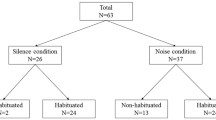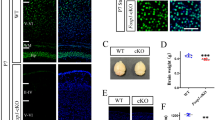Abstract
A previous study showed that rats exposed to methylmercury during development exhibit effects similar to those described for children with minimal brain dysfunction (MBD), namely, hyperactivity, altered locomotion structure, and unaltered learning ability, but reduced and more variable attention spans induced by increasing difficulties within an operant learning paradigm. Psychopathological studies suggest that behavioral disturbances of the MBD type may originate directly or indirectly from deficiencies in the tactile-kinesthetic system. This sensory modality is the main mechanism by which an individual organism assimilates reality. Deficiencies in the tactilekinesthetic system impair the action of the equilibration processes (in Piaget's sense) which ensure that the stages of psychological development occur in an orderly sequence. The lack of this control over development may result in the behavioral characteristics of MBD. Problems with the tactile-kinesthetic system may also be the reason for the deficiencies of fine motor control in MBD children. In an atempt to extrapolate this interpretation of human psychopathological mechanisms to experimental animals, an operant paradigm was developed for the assessment of the tactile-kinesthetic system of rats, the schedule of “differential reinforcement of force range” (DRF). Rats were trained to press in discrete trials a force sensitive lever during at least 1 s between two force thresholds of 60 and 80 g without any feedback other than the rats' own tactilekinesthetic perception. Offspring of rat dams exposed to 1.5 and 5 mg/l methylmercury-chloride in their drinking water from 2 weeks before pairing until weaning, exhibited a clearcut performance deficit (approximately 25% correct responses compared to approximately 50% of the controls). Moreover, they showed a dose-dependent increase in the percentage of responses in which the force excerted exceeded the upper threshold. Using Powers' model of behavior (“behavior is the control of perception”) the observed effects may be interpreted as a methylmercury-induced deficit in the tactile-kinesthetic sensory system. This result is in accordance both with the earlier interpretation of observed perinatal methylmercury effects on behavior and with the tactile-kinesthetic hypothesis for MBD. The DRF schedule is proposed as a sensitive tool in experimental behavioral teratology for the preclinical assessment of MBD hazard.
Similar content being viewed by others
References
Affolter F (1987) Wahrnehmung, Wirklichkeit und Sprache. Neckar-Verlag, Villingen-Schwenningen
Affolter F, Stricker E (1980) Perceptual processes as prerequisites for complex human behavior. Hans Huber, Bern
Brooks DA, Dean RS, Gray JW (1989) HRNB factors with simultaneous-successive marker variables. Int J Neurosci 46: 157–160
Burbacher TM, Rodier PM, Weiss B (1990) Methylmercury developmental neurotoxicity: a comparison of effects in humans and animals. Neurotoxicol Teratol 12: 191–202
Coleman JR, Lindsley DB (1977) Behavioral and hippocampal electrical changes during operant learning in cats and effects of stimulating two hypothalamic-hypocampal systems. Electroencephalogr Clin Neurophysiol 42: 309–331
Cox C, Clarkson TW, Marsh DO, Amin-Zaki L (1989) Dose-response analysis of infants prenatally exposed to methyl mercury: an application of a single compartment model to single-strand hair analysis. Environ Res 49: 318–332
Davidson M, Toporek J (1983) BMDP4V, general univariate and multivariate analysis of variance and covariance including repeated measures (URWAS). In: BMDP statistical software. University of California software. University of California Press, Berkeley, pp 388–412
Driscoll JW, Stegner SE (1976) Behavioral effects of chronic lead ingestion on laboratory rats. Pharmacol Biochem Behav 4: 411–417
DSM-III (1980) Diagnostic and statistical manual of mental disorders. Third Edition. American Psychiatric association, Washington, DC
Elsner J (1982) PASTOR, a new schedule programming language. Behav Res Meth Instr 14: 254–263
Elsner J (1985) The use of computers in neurobehavioral studies. In: Pharmacodependence and neurobehavioral toxicology: quo vadis. Sanofi Group, Monpellier, pp 213–237
Elsner J (1986) Testing strategies in behavioral teratology: III. Microanalysis of behavior. Neurobehav Toxicol Teratol 8: 573–584
Elsner J, Knutti R (1981) Graphical representation of the time evolution of ECG data using a computer data storage and plot package. In: Budden R, Detweiler DK, Zbinden G (eds) The rat electrocardiogram in pharmacology and toxicology. Pergamon Press, New York, pp 161–170
Elsner J, Knutti R (1991) The use of significance limits in graphical data representations. Experientia 47: 221–224
Elsner J, Wehrli R (1978) Interface systems in behavioral research. Behav Res Meth Instr 10: 259–263
Elsner J, Suter KE, Ulbrich B, Schreiner G (1986) Testing strategies in behavioral teratology: IV. Review and general conclusions. Neurobehav toxicol Teratol 8: 585–590
Elsner J, Alder S, Zbinden G (1988 a) Interaction between ethanol and caffeine in operant behavior of rats. Psychopharmacology 96: 194–205
Elsner J, Fellmann CH, Zbinden G (1988 b) Response force titration for the assessment of the neuromuscular toxicity of 2,5-hexanedione in rats. Neurotoxicol Teratol 10: 3–13
Elsner J, Hodel B, Suter KE, Oelke D, Ulbrich B, Schreiner G, Cuomo V, Cagiano R, Rosengren LE, Karlsson JE, Haglid KG (1988 c) Detection limits of different approaches in behavioral teratology, and correlation of effects with neurochemical parameters. Neurotoxicol Teratol 10: 155–167
Elsner J, Suter D, Alder S (1990) Microanalysis of ultrasound vocalizations of young rats: assessment of the behavioral teratogenicity of methylmercury. Neurotoxicol Teratol 12: 7–14
Gothoni PR, Lehtinen M (1985) A system for measuring tremor intensity in rats. Trans Biomed Eng 32: 256–261
Gross M, Wilson W (1974) Minimal brain dysfunction, Brunner/Mazel, New York
Hallberg H, Carlson L, Elg R (1985) Objective quantification of tremor in conscious unrestrained rats, exemplified with 5-hydroxytryptamine-mediated tremor. J Pharmacol Methods 13: 261–266
Harada M (1978) Congenital minamata disease: intrauterine methylmercury poisoning. Teratology 18: 285–288
Hepp-Reymond MC, Diener R (1983) Neural coding of force and rate of force change in the precentral finger region of the monkey. Exp Brain Res Suppl 7: 315–325
Huynh H, Feldt LS (1976) Estimation of the box correction for degrees of freedom from sample data in the randomized block and split-block designs. J Educ Statist 1: 69–82
Krehbiel D, Davis GA (1976) Absence of hyperactivity in lead exposed developing rats. Environ Health Perspect 18: 147–157
Magos L (1987) The absorption, distribution and excretion of methyl mercury. In: Eccles CU, Annau Z (eds) The toxicity of methyl mercury. Johns Hopkins, Baltimore, pp 24–44
Marsh DO (1987) dose-response relationships in humans: methylmercury epidemics in Japan and Iraq. In: Eccles CU, Annau Z (eds) The toxicity of methyl mercury. Johns Hopkins, Baltimore, pp 45–53
Piaget J (1970) Piaget's theory. In: Mussen PH (ed) Carmichael's manual of child psychology, 3rd ed, Vol 1. John Wiley & Sons, Inc., New York, pp 703–732
Powers T (1973) Behavior: the control of perception, Aldine, Chicago
Reiter L, Anderson G, Laskey J, Cahill D (1975) Developmental and behavioral changes in the rat during chronic exposure to lead. Environ Health Perspect 12: 119–123
Ruoss-Craps E (1988) Wirkung prae- und postnataler geringgradiger Bleiexposition auf Entwicklung und Verhalten von Ratten. Doctoral dissertation, Universität Zürich, Veterinär-Medizinische Fakultät, Zürich
Sagvolden T, Slatta K, Arntzen E (1988) Low doses of methylphenidate (Ritalin) may alter the delay-of-reinforcement gradient. Psychopharamcology 95: 303–312
Schreiner G, Ulbrich B, Bass R (1986) Testing strategies in behavioral teratology: II. Discrimination learning. Neurobehav Toxicol Teratol 8: 567–572
Silbergeld EK, Goldberg AM (1974) Lead-induced behavioral dysfunction: an animal model of hyperactivity. Exp Neurol 42: 146–157
Suter KE, Schön H (1986) Testing strategies in behavioral teratology: I. Testing battery. Neurobehav Toxicol Teratol 8: 561–566
Zenick H, Goldsmith M (1981) Drug discrimination learning in lead-exposed rats. Science 212: 569–571
Author information
Authors and Affiliations
Additional information
Dedicated to Professor Dr. Gerhard Zbinden on the occasion of his retirement
Rights and permissions
About this article
Cite this article
Elsner, J. Tactile-kinesthetic system of rats as an animal model for minimal brain dysfunction. Arch Toxicol 65, 465–473 (1991). https://doi.org/10.1007/BF01977358
Received:
Revised:
Accepted:
Issue Date:
DOI: https://doi.org/10.1007/BF01977358




